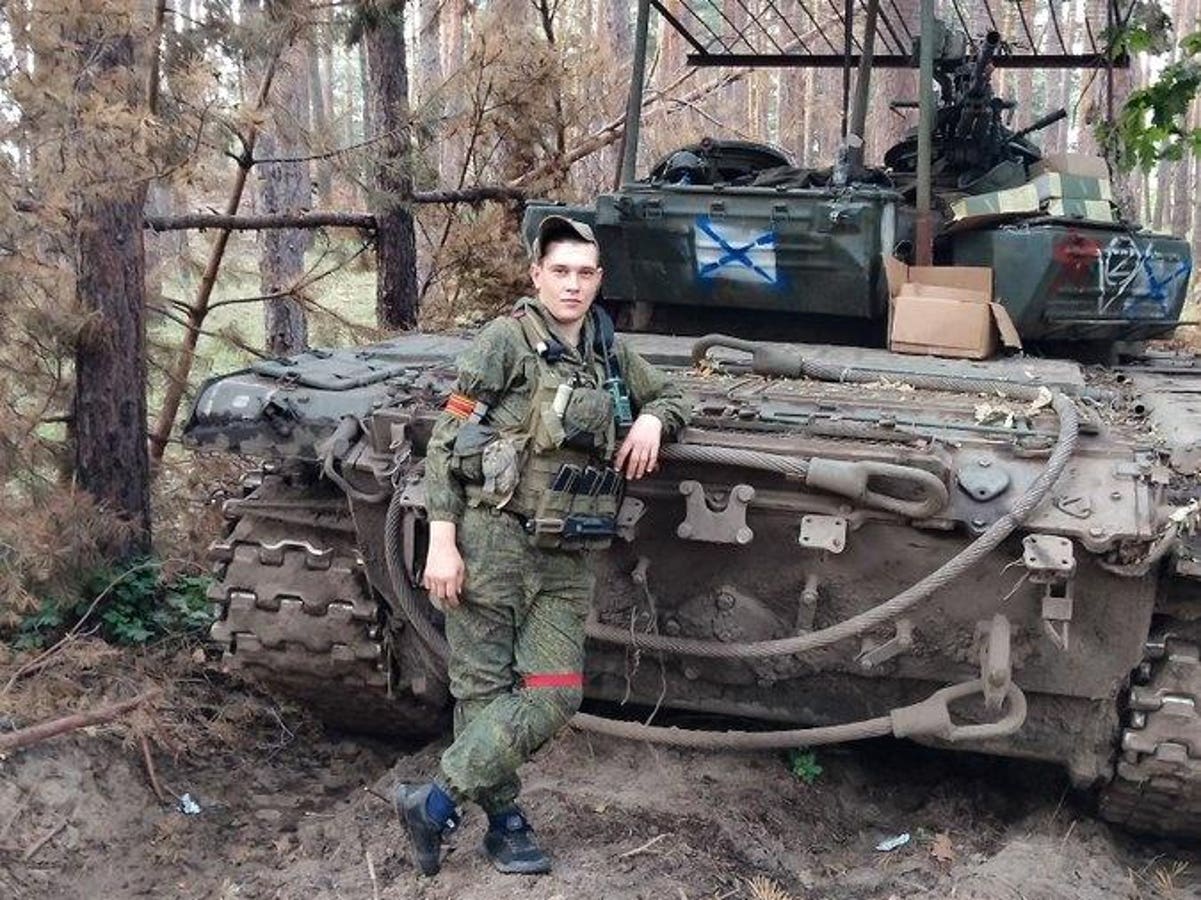Another Russian regiment apparently has reequipped with older T-72 tanks. It’s further evidence that, despite a heroic effort on the part of Kremlin planners to expand production of more modern tank models, steep losses in Ukraine continue to drag the Russians into the past, technologically speaking.
If there’s any comfort to be found in the Russian military’s tech regression, it’s that the Ukrainian military also is struggling to acquire the most modern tanks.
A photo from late October that circulated online this week depicts a Russian tanker, reportedly from the 488th Motor Rifle Regiment in eastern Ukraine’s Luhansk Oblast, standing with a T-72B.
The T-72B is old. It first entered service in 1985.
But we’ve seen T-72Bs in action in Ukraine before—so many, in fact, that the Russians have lost hundreds of them that independent analysts can confirm. What’s notable about the 488th’s T-72Bs is what they must have replaced.
The 488th MRR was, until recently, one of at least four regiments and brigades that fielded the T-72BA. An upgraded version of the T-72B with an uprated engine and better stabilization for its 125-millimeter, smoothbore main gun.
The T-72BA once was rare in Russian service. As recently as 2016, Russian media described the 46-ton, three-person T-72BA as having “a trial nature.” Russia produced around 700 T-72BAs but kept many of them in reserve, or in storage, prior to its wider war on Ukraine.
The T-72BA isn’t a tank anyone really wanted. It’s a modest upgrade of a T-72B that Russian tank-maker Uralvagonzavod originally offered as an alternative to the more modern, and much more expensive, T-90 starting in the late 1990s—a period of deep economic turmoil in Russia.
The T-72BA “was designed as a result of Russia’s financial difficulties, which meant the [ministry of defense] could no longer afford to purchase the T-90,” the U.S. Army explained. The BA was, in other words, a stopgap.
But 25 years later, as Russian tank losses in Ukraine exceed 2,000 and Uralvagonzavod struggles to boost production of new T-72B3s and T-90s, even the stopgap T-72BAs are running out. Observers through this summer tallied around two dozen lost and captured Russian T-72BAs. The actual number surely is much higher.
After apparently losing many of its T-72BAs, the 488th MRR clearly needed replacement tanks. It’s telling that those replacements weren’t new T-72B3s or T-90s. They seemingly were T-72Bs: the nearly 40-year-old tanks that Uralvagonzavod once stripped down and refitted in order to produce the T-72BAs. The Kremlin had thousands of T-72Bs in storage prior to 2022.
The T-72B at least is an improvement over the even older T-72A and T-72 Ural. It has an up-armored turret, improved fire-controls and extra stabilization for its main gun. An 840-horsepower diesel engine replaces the older 780-horsepower engine.
But the T-72B is a terrible night-fighter. Its 1K13-19 gunner’s sight has a passive night-vision mode that doesn’t require an infrared spotlight, but it lacks range. To identify targets out to the tank’s maximum engagement range of around 1,200 yards, at night, a T-72B crew must switch on its infrared spotlight and use the 1K13-19 sight in its active mode.
The problem, of course, is that any enemy forces with their own infrared sights can see the spotlight, too—and pinpoint the T-72B’s position.
As they added better passive night vision to their own T-64 and T-72 tanks and also acquired Western-style tanks such as Leopard 2s, Challenger 2s and M-1s, the Ukrainians began conducting more night operations. Under the cover of darkness, Ukrainian tankers have a big advantage over Russian tankers.
The more T-72Bs the Russians assign to front-line regiments, the greater the Ukrainians’ edge in a night fight. Kyiv’s forces should retain that edge even as they induct nearly 200 1980s-vintage Leopard 1A5 tanks from Germany, Denmark and The Netherlands.
A Leopard 1A5 is lightly-armored compared to a T-72B and its 105-millimter main gun is smaller than a T-72B’s main gun is. But thanks to its modern EMES-18 fire-controls and high-end passive gunner’s sight, the Leopard 1A5 shoots faster and more accurately than a T-72B does—especially at night.
In Ukraine, tanks rarely fight tanks, of course. A Russian T-72B isn’t a bad tank because it can’t defeat an equally aged Ukrainian Leopard 1A5 in a one-on-one fight. No, it’s bad tank because it’s really only useful between sunrise and sunset.
Which isn’t to say the 488th MRR and other Russian regiments won’t fight in their T-72Bs as best they can, when they can. Even the Ukrainians have made use of the dozens of Russian T-72Bs they have captured since the old tanks began appearing along the front in greater numbers.
Read the full article here





